This Shoulder Workout Will Strengthen Your Shoulder Joints Without Weights
Use a pair of gymnastic rings to build bomb-proof shoulders and give yourself a real bodyweight strength challenge
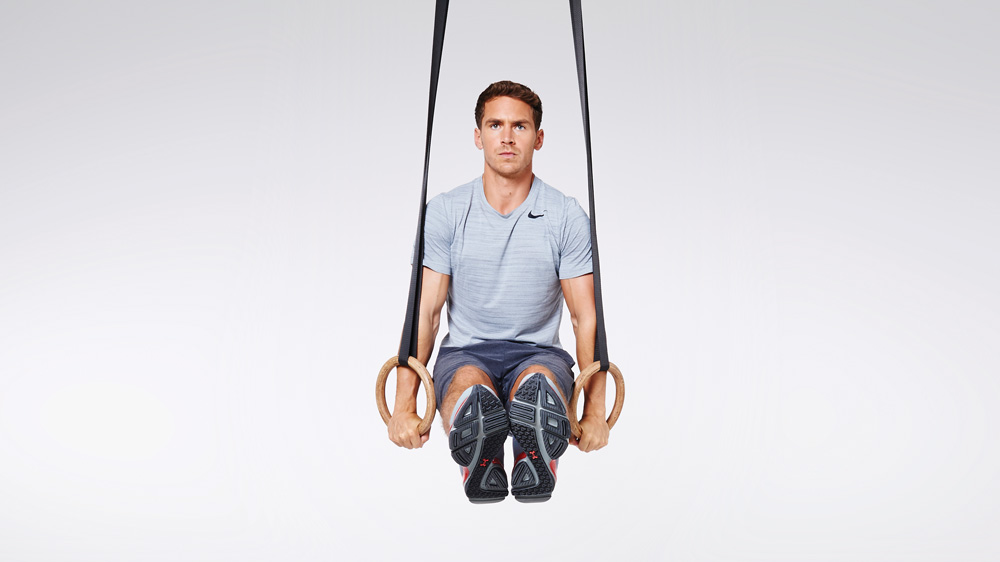
If you’re like most of the population, your first look at gymnastics rings probably came via the Olympics, courtesy of improbably-muscled athletes doing moves that look like Batman’s warm-up. But now, thanks to the popularity of CrossFit and calisthenics training, more and more gyms are dangling rings from the rafters (and reasonably priced sets are readily available online) – even if it’s still rare to see anyone use them for anything other than dips or pull-ups. But there’s a middle ground between the basics and the Olympians, and it makes sense to find it.
If smartly planned, ring training combines strength, hypertrophy and joint health, forcing your body to work in unexpected ways and build the straight-arm strength that’s so important in calisthenics. “They’ll also allow you to work your shoulders through ranges where they’d normally be weak, helping your shoulder joints get healthy and strong,” says James Stark, an ex-gymnast and calisthenics coach. “Some people go too far too fast, but with appropriate progressions, it’s an excellent form of training.”
Finally, there’s another, less obvious benefit. Moves like the pull-up and dip can put excess strain on the elbows if you do them every day, since your wrist wants to follow its natural rotation but can’t. Rings provide a simple solution, because they let your wrists rotate throughout the movement. With joint health taken care of, you can embrace high-frequency training – and since you can sling your rings up anywhere, you can use them more often than your thrice-weekly trips to the gym might allow. Time to ring some changes with these Men’s Fitness-approved moves.
1 Front support
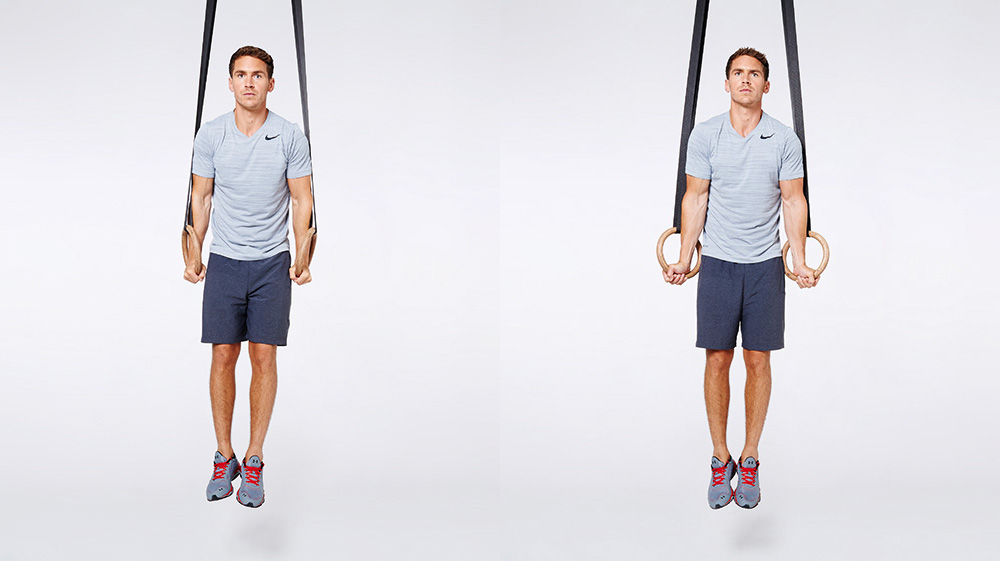
Sets 5 Reps 6
Jump into the top position of a dip – elbows locked, rings close to your body, knuckles facing your sides. Hold for a second. Turn your knuckles out to feel the extra tension, then turn them back in.
2 Pull-up
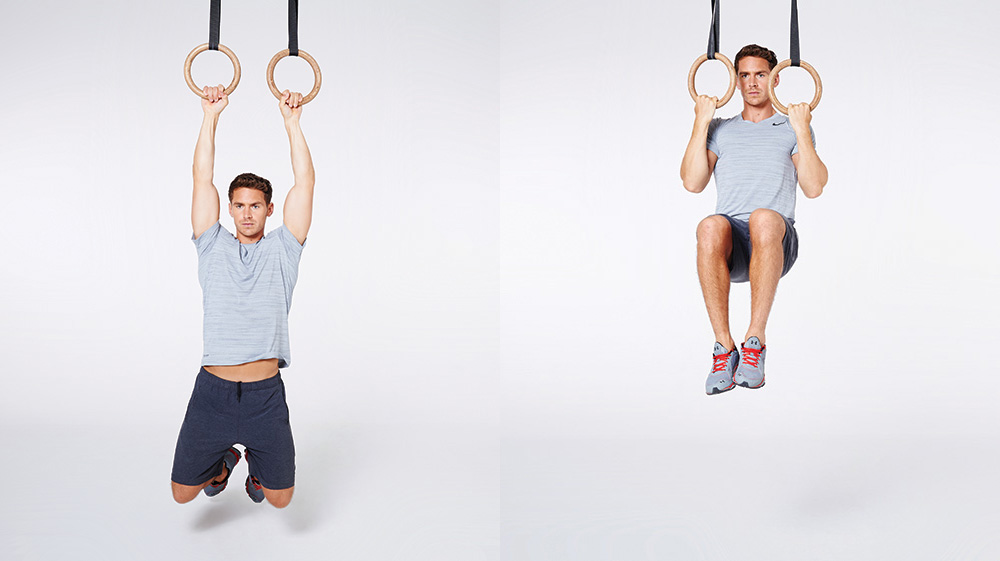
Sets 5 Reps 3
It’s tougher than the bar version, although easier on your elbows. Start with your palms facing forwards and brace your abs to minimise swinging. As you pull, twist your palms to face you. Pause at the top, then lower.
Get the Coach Newsletter
Sign up for workout ideas, training advice, reviews of the latest gear and more.
3 L-sit
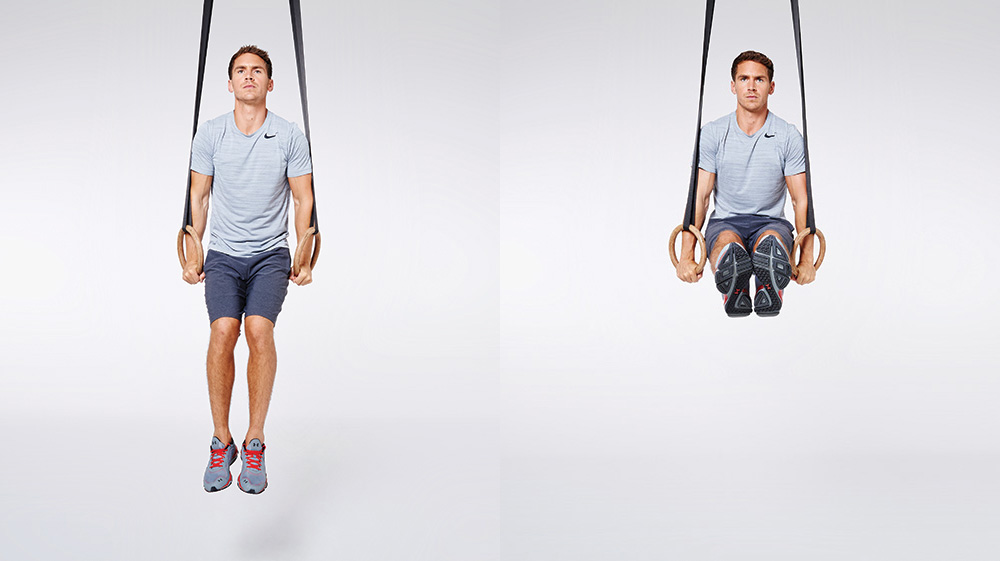
Sets 3 Time 10sec
This is a far better abs builder than sit-ups. From the “support” position, bring your legs up until they’re parallel to the floor. Brace your abs and hold for ten seconds.
If you find that the L-sit is too tough, you can do an easier version of the move by bending your knees slightly to reduce the demand on your abdominals. You should still brace your core to keep your abs fully engaged.
See related
4 Dip
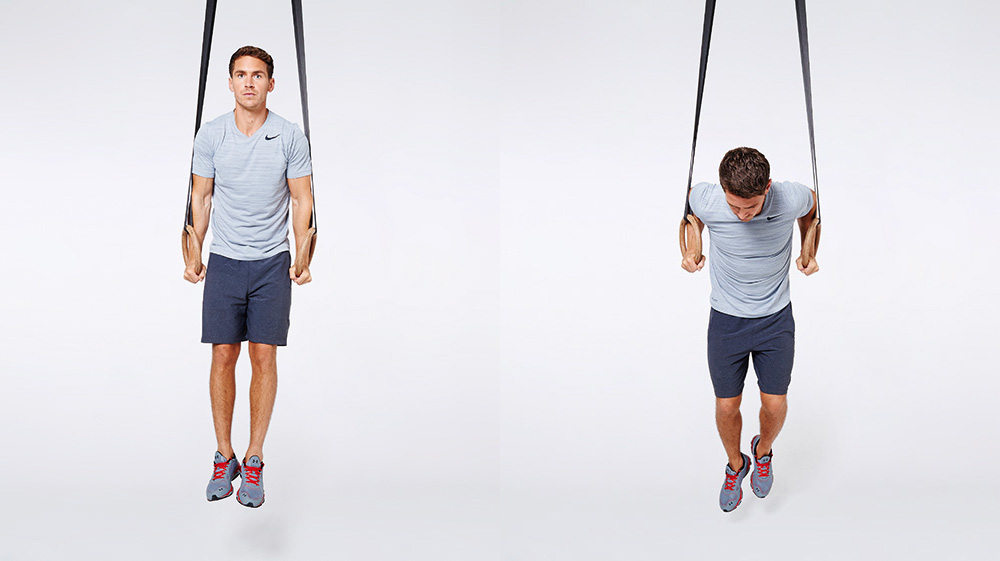
Sets 5 Reps 5
From the support position, bend your elbows and drop into a dip, lowering until your shoulders are just below your elbows. Leaning forwards will work your chest; staying straight will build triceps strength. Do a mix of both.
The ring dip is a demanding move, so it’s vital that you pay attention to your wrist position. You want a straight line from fingers to forearms, rather than an flexion or extension. You also want to make sure that your elbows don’t flare out to the sides because that will put extra stress on your shoulder joints.
5 Inverted row
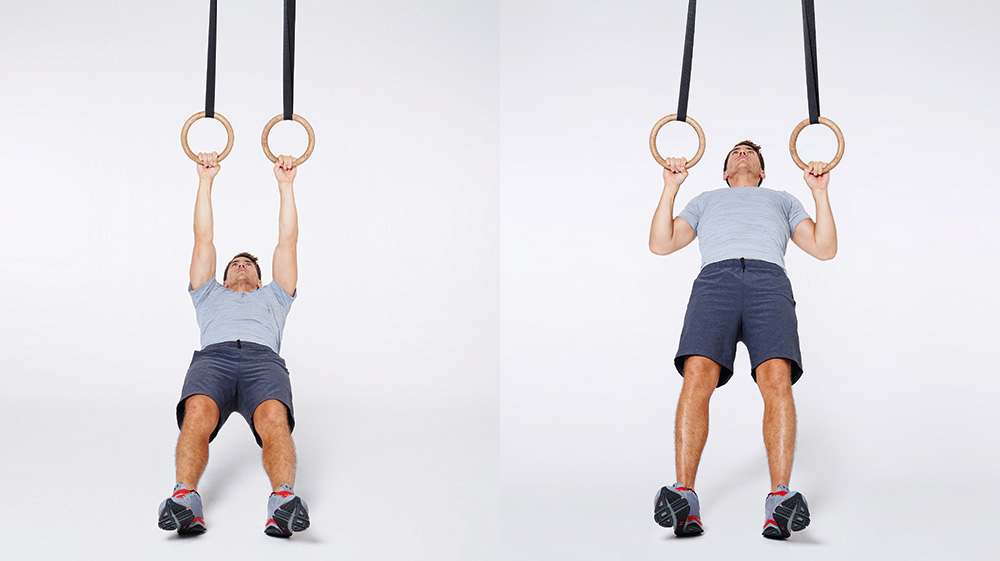
Sets 3 Reps 8
For this move that engages your shoulders to keep them flexible and healthy, hold the rings and lean back, keeping your body in a straight line. Focus on pulling your elbows behind you as you pull up to the rings.
6 Press-up
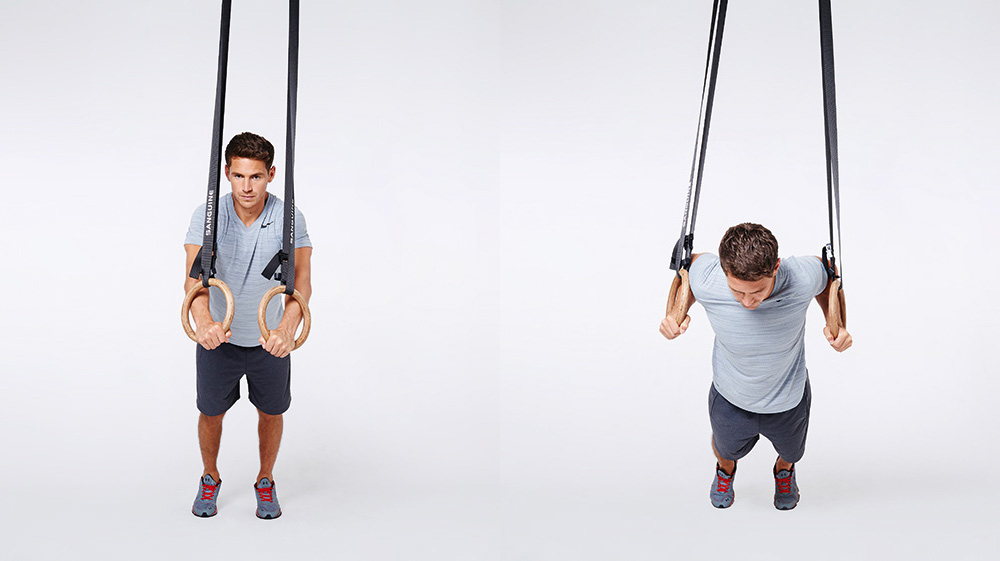
Sets 3 Reps 8
Much harder than the regular version. Lean forwards holding the rings and lower until the edges touch your armpits, then press up. As you improve, lower until you’re closer to the angle of a standard press-up.
Photography: Danny Bird
Coach is a health and fitness title. This byline is used for posting sponsored content, book extracts and the like. It is also used as a placeholder for articles published a long time ago when the original author is unclear. You can find out more about this publication and find the contact details of the editorial team on the About Us page.

